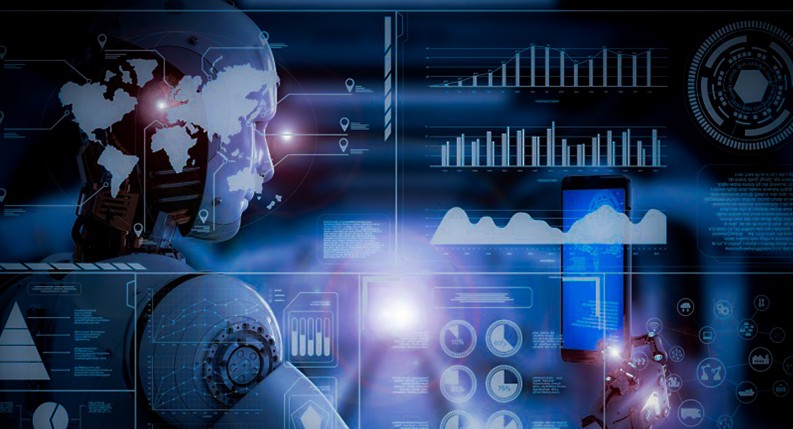Here are some myths and facts about AI and machine learning, and what they can do for your supply chain.
ARTIFICIAL INTELLIGENCE (AI) is an umbrella set of technologies, from robotics to analytical systems. Within AI there are various subgroups such as machine learning, deep learning, natural language processing, robotics, and so on.
For supply chain planners, machine learning can be thought of as having several areas of focus:
- The development of algorithms which are a richer level of statistical mathematics that can be used to discover trends, refine forecasts and optimisation, and evaluate multiple options.
- The analysis of data to discover trends and patterns such as consumer preferences, as well as improve the quality of information.
- The ability to learn – this means to constantly evaluate recommendations to improve outcomes.
- The development of intelligent agents. These are small programs that can autonomously perform specific tasks such as alerting users of changes, initiating a search, or performing other directed tasks.
With all the intimidating terminology surrounding AI and technology that seems to be expensive and resource draining – it may become discouraging to even contemplate it. But the fact is, there are a lot of myths circulating about AI.
AI and machine learning are somewhat new for supply chain, so you need to get the facts.
Myth 1 – AI systems emulate how humans think
The definitions that say AI systems think like humans are myths in themselves. AI systems are not spontaneous and cannot emote. AI systems, even connected to many sensors, are not able to absorb the environment around them as humans can.
Although AI and machine learning developers are developing languages, algorithms, and techniques that can be applied to create software that performs tasks that people do, these capabilities are very primitive compared to people.
Conversely, AI systems are probably better at remembering past experiences and improving systematically on past performance, whereas humans often rely on subjective memory and personal preferences. Coupled with machine learning’s ability to sift through mountains of data that we don’t have time for, it becomes a valuable aid to a supply chain analyst.
Myth 2 – AI is unseen and will execute with- out my approval
One of the biggest fears users have is that the ‘system’ will derive new ways of looking at things and then execute without review or approval. Yes, we do want more aware and insightful systems, but we may not want them acting on their own – not initially, anyway.
Think of this: millions of orders are processed through our ecommerce systems with virtually no human involvement. And we trust these technologies to do this for us every day. They are trained to do that.
Training consists of lots of testing and validating results and, over time, allowing the technology to automatically perform certain tasks.
Myth 3 – AI is smart algorithms, so I can just apply their intelligence
Not without the data! A machine learning application is as much, if not more, about data. Algorithms without data are like having the finest all-clad copper-core cookware without the high- quality food ingredients. You won’t get the results.
Applied machine learning is a complement of components – quality data, high performance
hardware servers, and the algorithms, all working together. All are important and need proper focus by users and IT to get results.
Myth 4 – since there is so much open source, I can build an AI system from scratch
Yes. But not very fast. And not very cheaply. Essentially, it is always the human labour effort that equates to most of the cost in technology transformations.
Yes, there are open source algorithms, rules libraries, and even API libraries, and we assume the IT staf has the technical skills to deal with them. But they also have to understand them and be able to modify that code for use and ensure its quality and production worthiness.
Myth 5 – if AI is hard to understand, I will need to hire data scientists
Maybe. There is a lot to learn. End-users and IT should make it a priority to understand the AI/ machine learning segment – what it is, why it is needed, and the particulars of certain types of data and analytical methods so they can apply them to their specific areas.
Actually, for supply chain pros and the challenges they deal with every day, machine learning algorithms could look like a somewhat familiar, albeit new, home to take their queries.
Myth 6 – AI will take my job away
Take it away? No. Change it? Yes. AI/machine learning will broaden our view. There is a lot more to understand – all those causals, that changing world we are experiencing. Hence, we do need new insights and methods so we can learn more about the market and customers, the environment in which products are sold or used and how the needs will change over time. Learning more will efect change on everything
– from our product and service oferings to our data and planning platforms, and even the nature of our enterprise structure. Already, adapting to these changes is a source of great challenge.
Despite the drama, though, AI/machine learning doesn’t have to be threatening. Nor does it have to be rocket science. Think of all those repetitive tasks such as data cleansing, tracking down errors or missed data feeds, cranking out and double-checking reports between disparate systems. These and so many other tedious tasks are burdensome. AI can autonomously review hordes of data and improve its quality and update it with more accurate and dynamic content. We could benefit from this kind of automation, don’t you think?
Yes, AI/machine learning will change things. Yet, it could provide that opportunity to finally ask some new questions and get the answers to those intractable supply chain challenges. And it just may free up some time to learn about AI/ machine learning and upgrade your skills.

.png)


